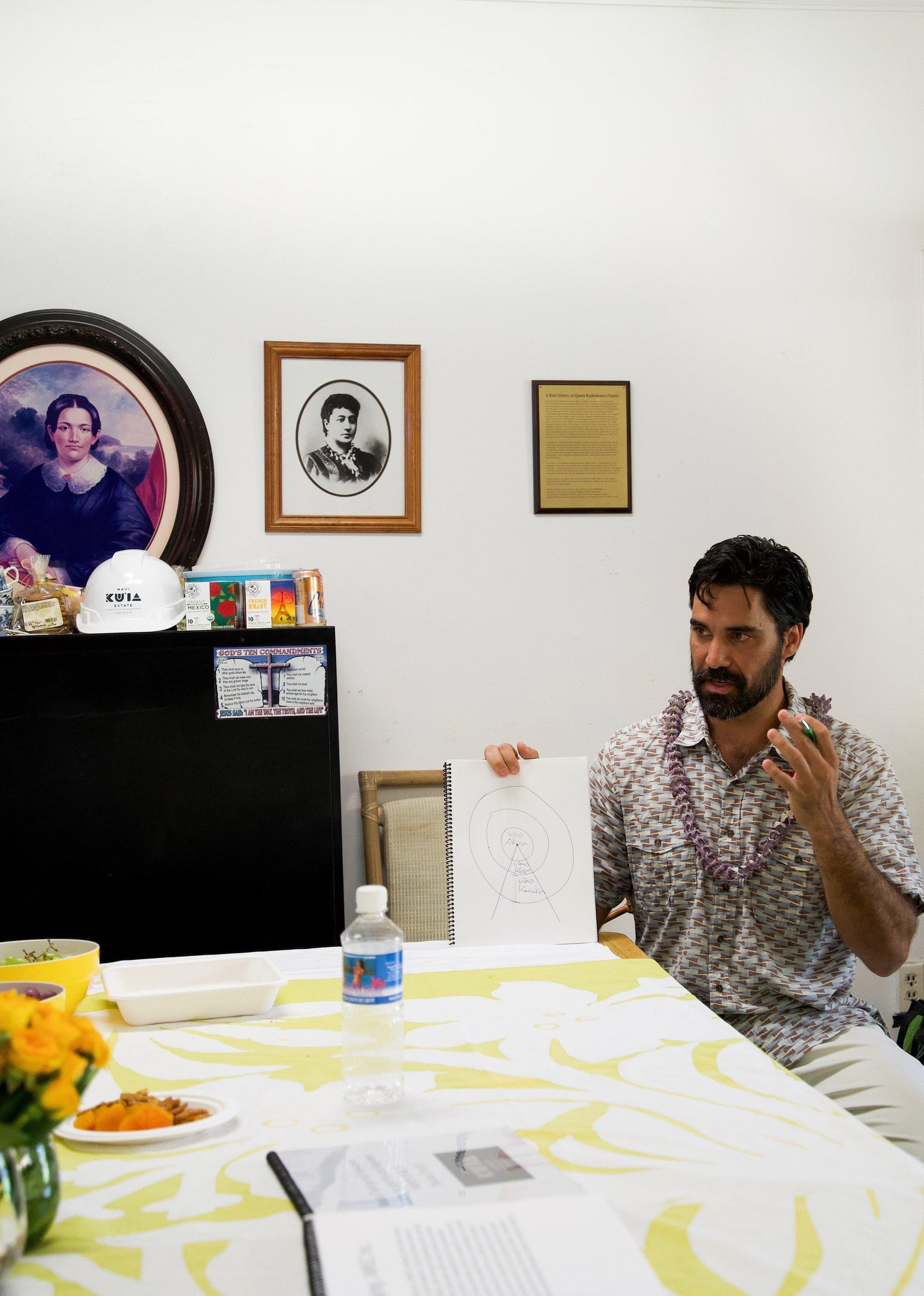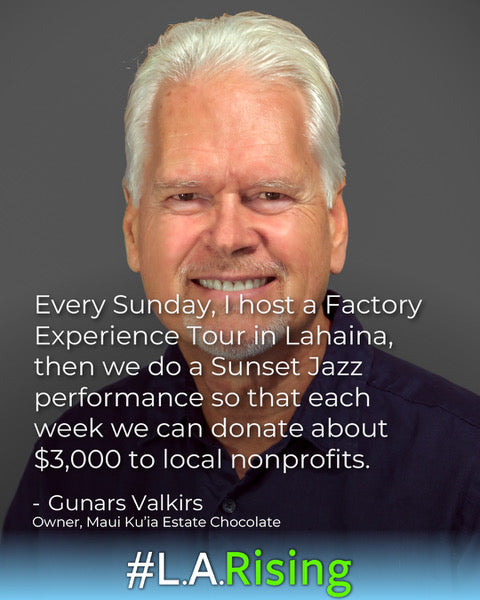
What is an ahupuaʻa? Most people with a basic understanding of Hawaii would answer that an ahupuaʻa is a pie-shaped unit of land used by traditional Hawaiian society to divide the islands, but this is only half of the story.

Our chocolate factory, Maui Kuʻia Estate Chocolate, is named after the ahupuaʻa on which our cacao farm stands, and we wanted to learn more about the history behind our home, so we invited two of Maui’s respected cultural advisors, Clifford Naeʻole and Kainoa Horcajo, to spend time with our team and to teach us about the land above and below the chocolate. Kuʻia, the name of both our company and our ahupuaʻa, means “spearhead” because the land was once a place for battle practice.

We learned that ahupuaʻa is not just a way to divide land but a way of life. These triangles of land start small and narrow up high on the mauka (mountain) and widen as they grow towards the kai (ocean). Mr. Naeole told us a Hawaiian proverb that goes “Mai makaʻu I ka hana, makaʻu I ka moloa” that translates to “Don’t fear work, fear laziness.” He went on to explain that laziness was one of the worst sins to commit in the ahupuaʻa system because everyone relied upon everyone else. The balance of the ahupuaʻa was critical to its success. Each section of the ahupuaʻa had a purpose, and each individual had a responsibility (kuleana) to the land and community.

The top of the mountain was called wao akua, and this was a sacred place not for people but for the gods. Priests prayed here. And in the wao akua were the watersheds that supplied water to the streams flowing down the mountain slopes towards the sea, giving life to the land. The Hawaiian tradition believed the wao akua should remain untouched. The second highest section of the ahupuaʻa was the forested mountain area called wao kele where the large trees grew and where the streams started to divide. This was a hallowed place where people came and went but did not live.

Next came the wao kanaka, which means the realm of man, and everyone lived and worked here. This area included the uplands, the coasts, and everything between. Each section of land had a different purpose. Each ahupuaʻa was able to sustain itself by growing and making everything important for the Hawaiian way of life—like koa wood for canoes, kukui nuts for oil, and kalo plants for poi. The wao kanaka ended at the coast, but the ahupuaʻa continued on into the kai (sea) that provided food, salt, and recreation.
The ahupuaʻa community could only flourish when each individual worked hard and fulfilled the responsibility entrusted upon him or her.

Kainoa Horcajo related the ahupuaʻa model to our chocolate. He said that the bottom of the ahupuaʻa is the “what,” meaning what we do when we show up for work each day. The middle of the mountain represents how we do our job—with hardwork and dedication. The top of the mountain is the “why” of what we do. Like in the ahupuaʻa model, the “why” feeds the “how” that creates the “what.” The “why” is the reason for being.

He asked us to reflect on the “what”, “how”, and especially the “why” of our chocolate. Our “what” is one of the best chocolates in the world, made on Maui. The “how” is employing science and best practices to cultivate and process cacao with the same attitude that is applied to fine wine. Our “why” is the desire to strive for excellence, to accept responsibility, and to support our community—which is why our founder, Gunars, set up Maui Kuʻia Estate Chocolate to donate 100% of its net-profit to charities and nonprofits that support Maui. The community, the land, our chocolate, and our passion are all interlocked, supporting each other and driving us into the future.





Joseph Sitati
May 27, 2025
A friend who recently visited Hawaii and the Maui Ku’ia Chocolate farm/factory shared with me today the fascinating story of the scientific and humanitarian work going on in Maui in Hawaii. To understand better for myself, I decided to visit the website. I am also fascinated by what you are achieving here.
First, being based in Tooele Utah, how can I secure some of your dark chocolate? Our company Elgon Nuts roasts and packages macadamia nuts and value added products, and we are studying chocolate covered macadamia nuts, but we do not yet have good quality chocolate which aligns with the natural health benefits of macadamia nuts. We bought dark chocolate 72%, some weeks ago and found it somewhat bitter to the taste. My friend who visited your farm highly recommended your chocolate, and so we would like to try some – we want it at the concentration of cacao that offers the optimum health benefits that compliments those of our macadamias.
Second, we are originally from Kenya, where we source our macadamias through our own family owned processing facility there. We buy raw materials from many small scale farmers, and we are trying to establish a stable market for their produce here in the US through an integrated value chain. Our goal is to pay fair prices, while helping the farmers to take better care of their trees so they can increase harvest volumes and incomes. In this manner, our community focus is quite similar to yours and we would like to stay in touch and learn from the good work you are doing in Maui.
My friend also mentioned Dr Gunar Valkirs as the founder of this cacao initiative in Hawaii. I am going to try to reach out to him separately as I believe his approach and our are very similar although we are not at the stage where we can give all our profits to the community because we have never made a profit but intend to include the community in the governance of our business and, when we are profitable, to give to the community as much as we can. Thank you.